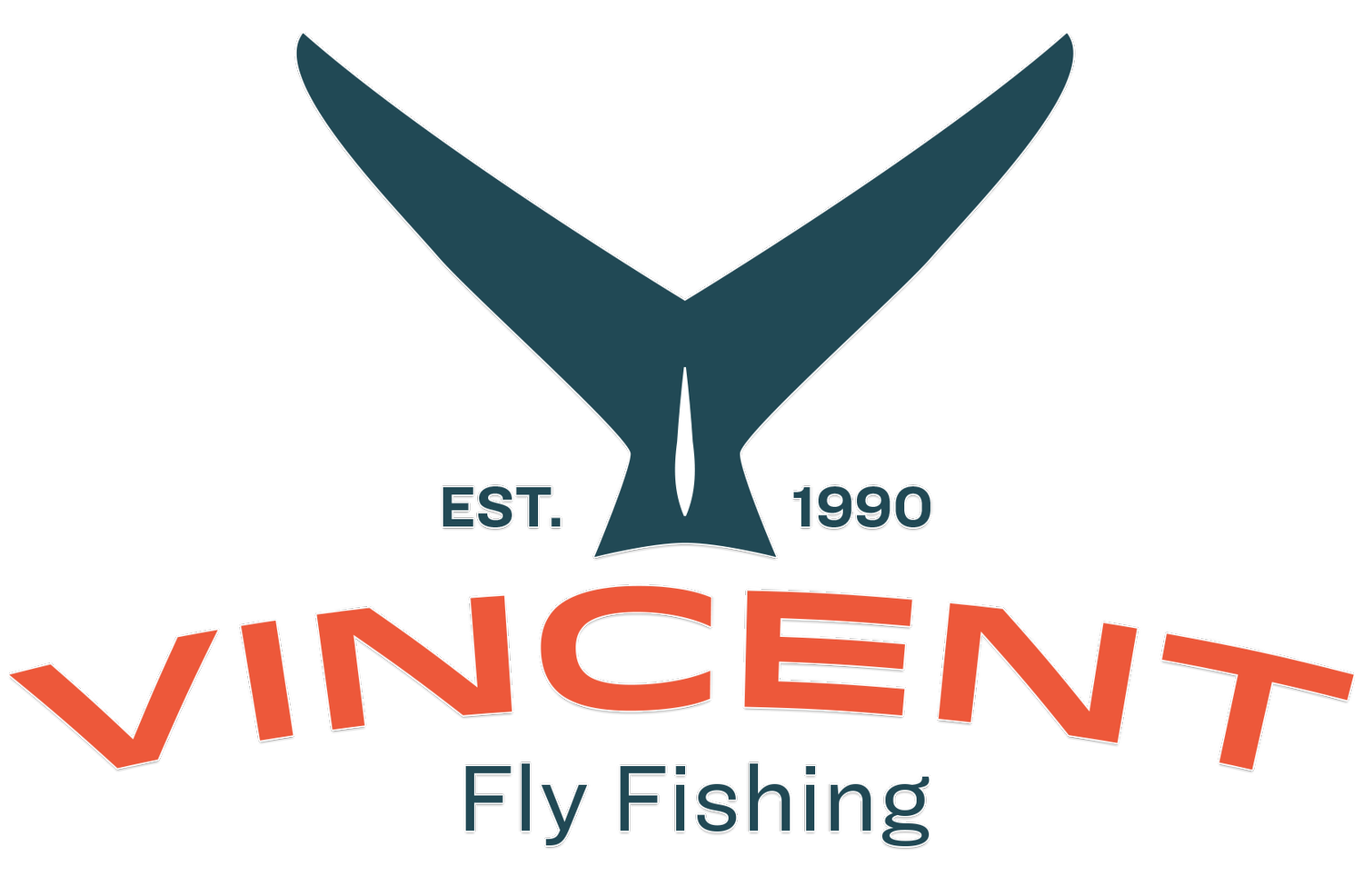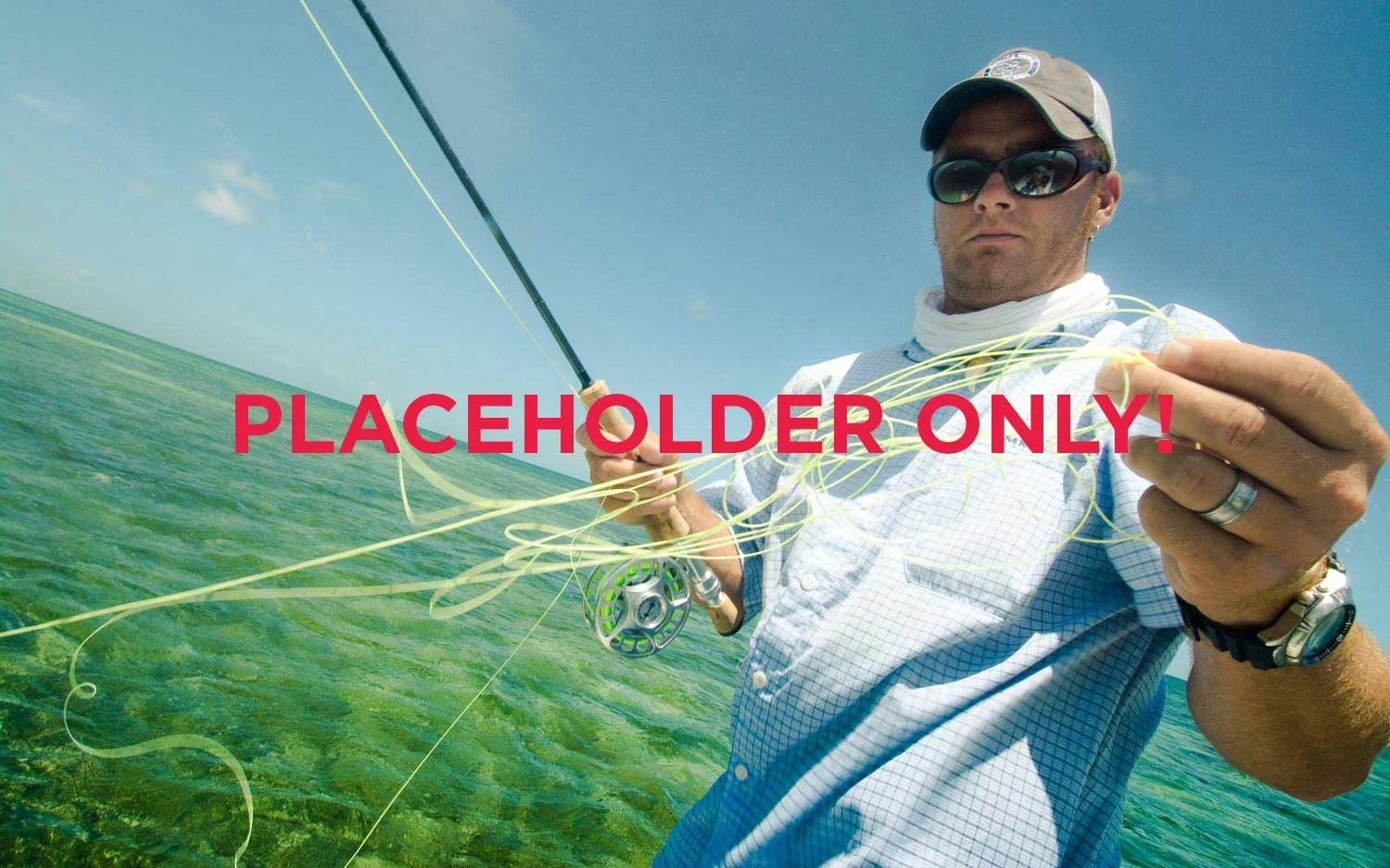Enemy #1, When Saltwater Fly Fishing
Understanding slack and why it should be a 4 letter word !!!!:
Placeholder image only. Need to replace.
This may sound familiar.......strip strip, stop, strip, NO, stop, stop, STRIP !! A string of commands like this is not unusual, in fact it's very common and can be a real challenge to piece together a clear understanding of the requests coming from the platform. The cause of this confusion is understandable because how can an angler execute these requests when the command changes as quickly as it takes to just say the word itself? A string of conflicting requests that come almost all on top of one another ?
This confusion however can be easily clarified. An anglers control of his fly is with the stripping hand when bonefishing and not like trout fishing where rod manipulation has benefits to streamer fishing for example or mending the line. With bonefishing you want to make your presentation, lower your rod to the water and have your rod stationary and pointing straight at your fly. The flies movement is then carried out using the stripping hand and ONLY the stripping hand. So, when commands to strip come from the guide it is only natural for those commands to always be related to fly animation. So three straight and rapid requests for ' strip ' for example means that the fly needs to be moved fast to entice the fish to eat the fly. ' stop ' may well mean the fly is now moving too quickly and looks unnatural and so on. So the angler is executing the commands based only on fly animation requirements. It would be a natural assumption to do so and while that would be correct some of the time it may well not be most of the time. This is often where the confusion lies. The majority of the time when a guide for example demands a rapid ' strip, strip, strip ' there is a good chance that the command is nothing to do with animating the fly to make it attractive but everything to do with ridding the slack from your line.
One of the most difficult aspects of guide / angler communication is not challenges in overall communication between the two but rather the time or lack thereof in which to do so. The challenge from the guides perspective is that there is rarely any time to explain the difference in the often hectic moments immediately after presentation. Remember, a guide has seen every version of a cast and presentation ever made. They know the value of a straight line and the disadvantages of slack in the line. They instinctively factor them in to every presentation of a fly to a bonefish from the front of a skiff. They immediately know how much slack is created as part of the cast itself and how much slack exists in the moments immediately after the cast due to the boats movements. Even when the fly is in the air they can know how that fly will land and the adjustments that will be needed. For a guide those are ingrained in such a way that no thought has to be given. it is first nature and those factors are calculated in a millisecond and the adjustments needed are immediately vocalized and the commands will often come quick. if not quick then you have either made a perfect presentation and hook up (woohoo !! ) or the opportunity has passed in some way ie a spooked fish.
So it is very important to understand slack. if anglers want to do themselves a big favor when bonefishing from the front of a skiff then they should utilize down time while waiting on the bow and look down occasionally and see how fast the boat is moving. Try and train yourself to be aware of the boats movements or lack of. The advantages of knowing this is enormous. There are several contributing factors that will alter and change very quickly as to slack while you are fishing. The more aware you are of these changes the more successful you will be. You should try and recognize the differences not only with the boats movements but also your own casts. Recognizing incomplete casts or casts that don't turn over fully will help determine how much slack you have and therefore how you need to adjust. You always want to know how much ' catching up ' to do before you get tight to your fly. it is so easy to get caught up just looking only at the fish and not take into account other factors that will then contribute to whether you will or will not hook that fish. Sometimes you can get away with it with a school of bonefish for example as maybe several fish will be ready again to eat your fly after the first 2 have been missed due to slack. A large single fish however will not afford you that opportunity as there is no other fish to back her up and eat your fly and off she swims and that fish of the trip lost to memory due to the dreaded slack !! Often it is the things that we do wrong that teach us the most so the quicker you can recognize and explain to yourself the nuances of slack the better the bonefisherman you will become. Amounts of slack in the line will always contribute massively to an anglers success and/or failure so understanding the causes is vital in minimizing the negative impacts. Try and be aware of the conditions where possible also. So for example if the light is such that your shots are going to come quickly, maybe high glare or cloud then you know that the guide will never have the opportunity to stop the boat. So you know that while these conditions remain that slack is going to be a factor. On the other hand, if you are on a nice even sand or mud bottom flat with decent light and the fish is spotted 150 feet away and a clean stalk can take place with the time to position and hold the boat then the presentation is made from a stationary position and therefore slack is less of a factor. The next spot may have great light but the bottom could well be very rocky and the guide may not want to secure a hold on the pole because it could run the risk of making a sound that would spook the fish so he cannot stop the boat in this situation. These are just a few examples of how circumstances change and in truth you do not need to know the reasons for the changes but you should try and anticipate them by always being aware of whether the boat is moving and if so how fast. Another indicator to look for is to get in the habit of glancing at the last few yards of your fly line. That should always remain straight. Any waves or kinks in the fly line means you are not in contact with your fly and therefore either need to strip longer or faster or both. The windier it is generally the more slack is created. So when you start each flat its best to strip off the line you need, cast that out and bring it in so the coils of line now lay on top of one another in the order that they will come off the deck on the next presentation. So when you do this just pause a second and look at your last 2 yards of fly line and see how much stripping action is needed to straighten it out before you then strip it all back to the ready position. That will give you an idea of slack when you then make your presentations at the fish.
Every angler has the opportunity to know, they just need to begin the process of factoring it into their bag of tricks so next time you are on the front of a flats boat put some time and effort into ' feeling ' the boats movements especially at the time of presentation. Try and find the best way you can factor this into your skill set. If you do then you will be very pleased with the results.

